The 17 Best Japanese Sports Cars Of All Time
Take a trip down memory lane as we check out the finest Japanese sports cars that have earned cult following, from JDM classics to modern-day masterpieces.
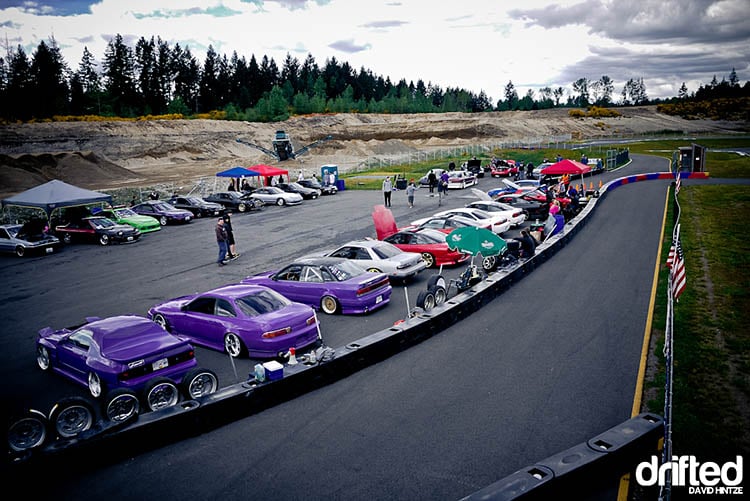
- Introduction
- Datsun 240Z
- Honda Integra Type R
- Honda NSX
- Honda S2000
- Lexus LFA
- Mazda Eunos Roadster (Miata)
- Mazda RX-7
- Mitsubishi Lancer Evo VIII
- Nissan 350Z/370Z
- Nissan Silvia
- Nissan Skyline
- Nissan Skyline GT-R KPGC10
- Subaru Impreza 22B
- Toyota 2000GT
- Toyota Corolla AE86
- Toyota 86/Subaru BRZ
- Toyota Supra
Introduction
When many think of the insane sports cars to come from the Land of the Rising Sun, the 90s will most likely be the first thing that comes to mind.
While the 90s were indisputably the golden era for Japanese sports cars, providing true JDM legends such as the Skyline, Silvia, Supra, RX-7, and the NSX, the past and present undoubtedly deserve recognition.
As many manufacturers steer away from sports cars in favor of EV’s and SUVs, Japan remains at the forefront of the fun-haver sector.
With the brand-new Nissan Z-car soon to hit the market, the recent rebirths of the Supra (well, it’s kinda JDM, anyway) and NSX, alongside the ever-evolving Toyobaru 86 family – Japan isn’t showing signs of becoming boring anytime soon.
As well as the new cars rolling off the production line, the tuning potential and desirability of the older Japanese sports cars continue to make them increasingly sought-after, with many now reaching legendary status as prices continue to soar.
With almost all Japanese sports cars offering impressive performance in stock form, it’s the tuning potential, even the modern-day vehicles, that makes them so desirable for drifting.
From bolt-on parts such as exhausts and intakes right the way through to off-the-shelf turbo kits and superchargers, there’s just about everything you could need to unleash the full potential of almost any Japanese sports car - old or new.
Whether you’re looking for a missile to throw down at the track, a track weapon with near-limitless tuning potential, or a sleek street cruiser, there’s something for everyone on the JDM market.
While the likes of some of the modern-day classics, such as the Nissan Skyline R34 GT-R, are not yet legal to import to the US, the 25-year rule will soon provide the opportunity to get your hands on these future classics.
As we dive into our list, you’ll take an incredible trip down memory lane, remembering how Japanese sports cars have birthed so many unique car cultures and inspired many tuning enthusiasts over several decades.
Datsun 240Z
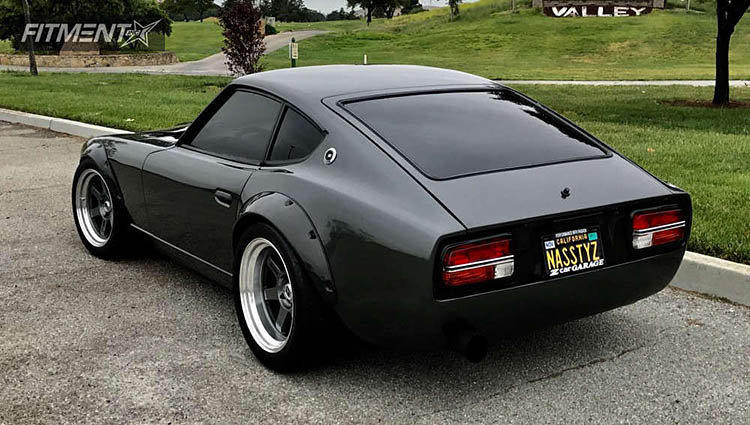
When Datsun introduced the first-ever Fairlady to the market in 1969, it provided an impressive 2.4L inline-six engine, an impressive 151hp from the rear-wheel-drive layout, and four-wheel independent suspension.
The respectable powerplant helped the 240 go from 0-60 mph in under 8 seconds.
As you may have guessed, in 1969, this was kind of a big deal.
Aimed at competing against its main rival, the Toyota 2000GT, it also had competition in Europe, such as the British MGB-GT.
However, it trumped its rivals with a price tag of just $3,500, brand-new from the showroom, and outperformed on performance, design, reliability, and drivability.
If anyone has an immaculate 240Z for $3,500 these days, feel free to hit us up!
Are you interested to know more about the 240Z? We’ve put both the 240Z and 280Z head-to-head in this guide.
Honda Integra Type R
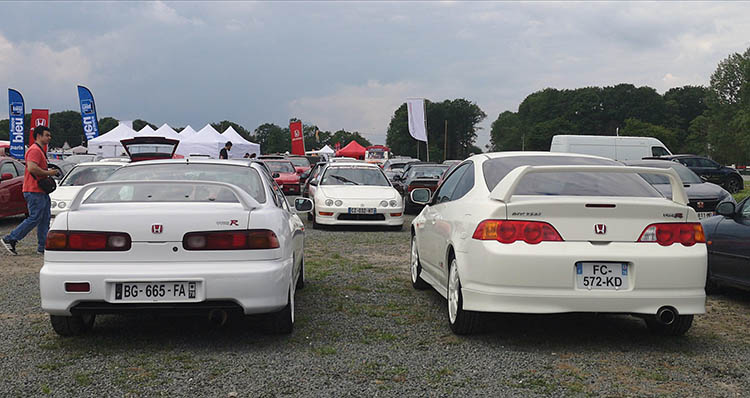
We’re not specifically speaking about the DC2 or DC5 here, as they’re both incredible cars in their own right. (Plus, we don’t want to upset the Honda fanboys.)
When the DC2 Integra Type R hit the market in 1995, it provided a car that could head straight to the track and cause some severe upsets, even in stock form, thanks to its incredible handling.
Despite having a 1.8L with 187hp, the screaming 8,000 rpm redline propels it to 0-60 in just 6.5 seconds, and it’ll undoubtedly put many rear-wheel-drive cars to shame in the twisties.
We’ll let the Honda boys battle it out for the winning chassis, but with the DC5 Type R providing 220 hp, it has a clear advantage in the power department.
When Best Motoring put the two head-to-head on a twisty track… Actually, we’ll let you see who wins with this old-school JDM footage, courtesy of the Drift King Keiichi Tsuchiya.
Honda NSX
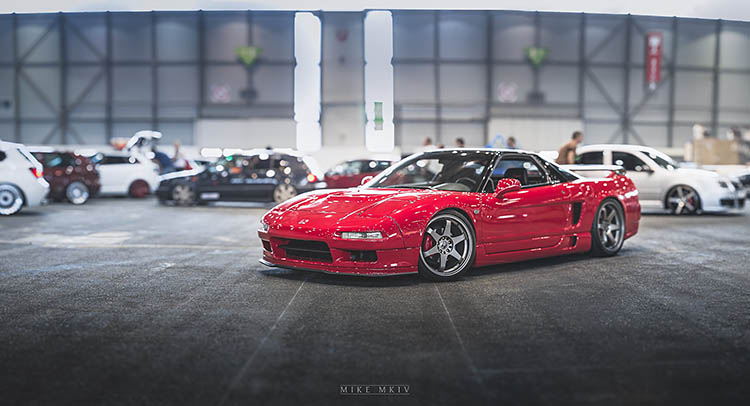
Can we have a moment to appreciate the looks of the NSX? I mean, it’s an absolute beauty.
Marketed as the “everyday supercar,” the NSX was the JDM answer to an affordable Ferrari.
A far cry from your typical FWD Honda, the NSX is a two-seater, mid-engine sports car which competed with its Italian rivals at a fraction of the price tag.
A 3-liter, 24V V6 VTEC engine pushed out 290 hp alongside Hondas notorious 8,000 rpm redline, catapulting it from 0-60 in 5.7 seconds, with a top speed of 168 mph.
With the input of the likes of Ayrton Senna, it’s no surprise that this game-changing all-aluminum supercar is often regarded as one of the most impressive cars of all time.
Honda S2000
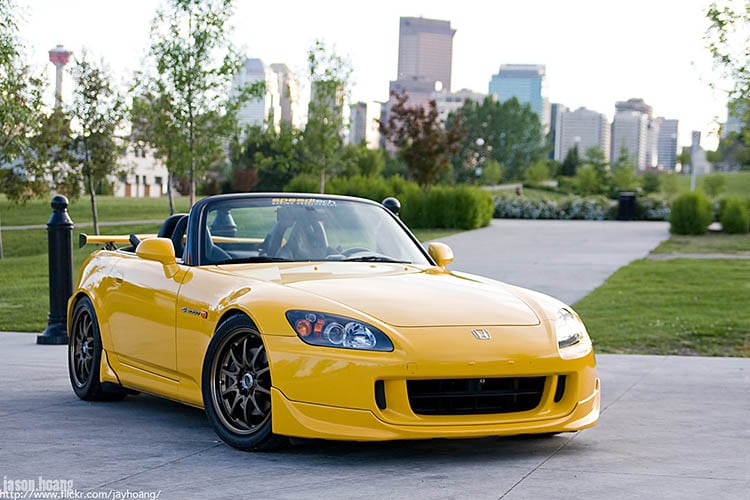
The NSX wasn’t Honda’s only impressive break away from their typical FWD roots, either.
In our opinion, the S2K is hugely underrated in many ways, and this high-revving two-seater provides epic rear-wheel-drive fun in a compact package.
With a DOHC 2.0L inline-four VTEC engine under the hood, the S2000 can push out up to 247 hp in stock form, making it the highest naturally aspirated production engine ever produced at the time.
Before Ferrari launched the 458 Italia to the market, it held this title for ten years.
Still, the F20C produces 123.5 HP/L, compared to the 458 Italia’s 124.5 HP/L – we think you’ll agree that it still provides better bang-for-your-buck!
Boasting a 9,000 rpm redline, along with a 0-60 of under 6 seconds and superb handling in the twisties, it’s no surprise that S2000’s are so popular.
With just 66,860 S2000’s sold in the US over their nine-year lifespan, compared to 3.1 million Civic’s in the same period, they’re quickly achieving cult status. So, if you’re looking to buy an S2000, we’d recommend doing so sooner rather than later!
Keen to learn more about the S2000’s powerplant? Check out our F20C engine guide.
If you’re considering an S2000, make sure you also check out our S2000 tuning guides.
Lexus LFA
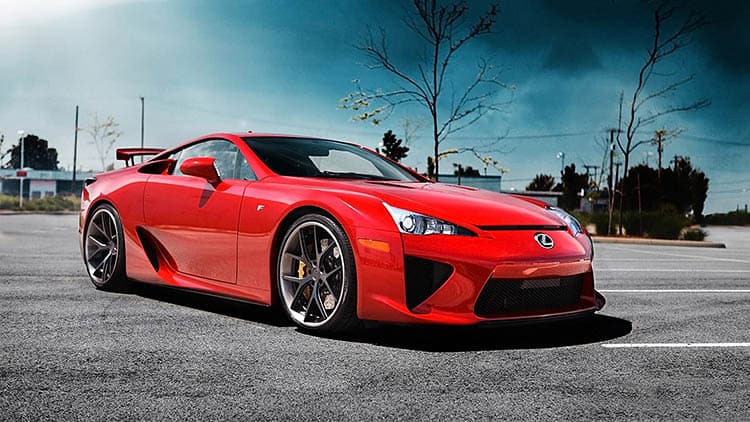
Toyota’s luxury line, Lexus, has unquestionably provided some pleasant surprises over the years, but the LFA is somewhat mind-blowing.
With its insane 1LR-GUE 4.8-liter V10 powerplant pushing out 552hp, it’s an engine that you need to hear to believe.
Launching just 500 models, each with a base price tag of a modest $375,000, it won’t come as much as a surprise that the LFA has quickly become one of the most desirable modern-day Japanese sports cars ever made.
Featuring a Honda-esque 9,000 rpm redline, it takes just 0.6 seconds to achieve this from IDLE - in fact, the needle moved so fast in the cluster that they couldn’t produce an analog dial that could perform quick enough.
Yamaha helped design this insane powerplant, and they no doubt assisted with achieving the 3.6 second 0-60 time.
Almost ten years on, the 1LR-GUE remains one of the most technologically-advanced engines ever produced.
You may want to brace yourself for the sounds featured in this video. Life goals right here:
Mazda Eunos Roadster (Miata/MX-5)
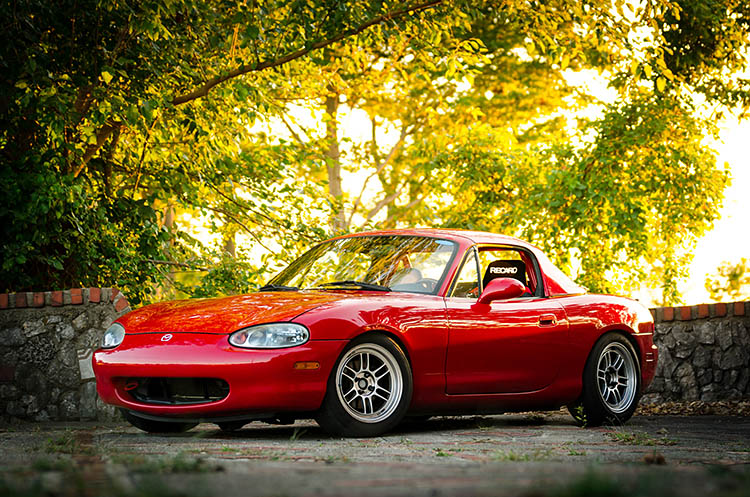
What’s not to love about the humble Eunos Roadster?
Known as the Miata in Japan and the MX-5 in Europe, the humble Mazda has been the answer to ridiculously affordable two-seater prayers since the late 80s.
Sure, it may be a little underpowered in stock form, but an engine swap, turbo, or supercharger kit can quickly rectify that!
From the NA to the ND, Mazda has continued to provide fantastic examples of just about as much fun as you can get for the money, right the way through to the present day.
If you’re considering modding a Miata, make sure you check out our Miata mods and Miata tuning guides.
Curious how it holds up against the GT86/BRZ/FR-S? We’ve got you covered.
Mazda RX-7
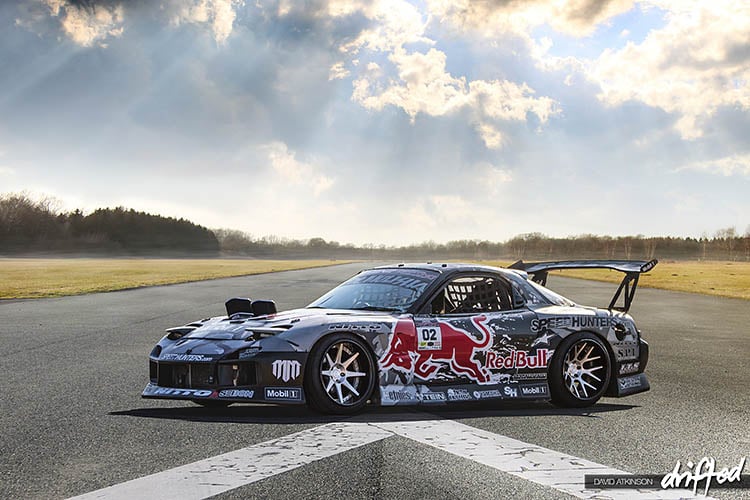
Mazda’s RX-7 legacy first began in 1978, and they went on to produce undisputably the most incredible 1.3L engine ever created, the 13B-REW, which eventually pushed out almost 240 hp in stock form.
However, tuners across the globe soon realized that this was just the start of the true potential that the insane rotary had to offer.
Before we knew it, people were pushing the boundaries of what the rotary had to offer, and four-figure power outputs soon became the norm.
Mitsubishi Lancer Evo VIII
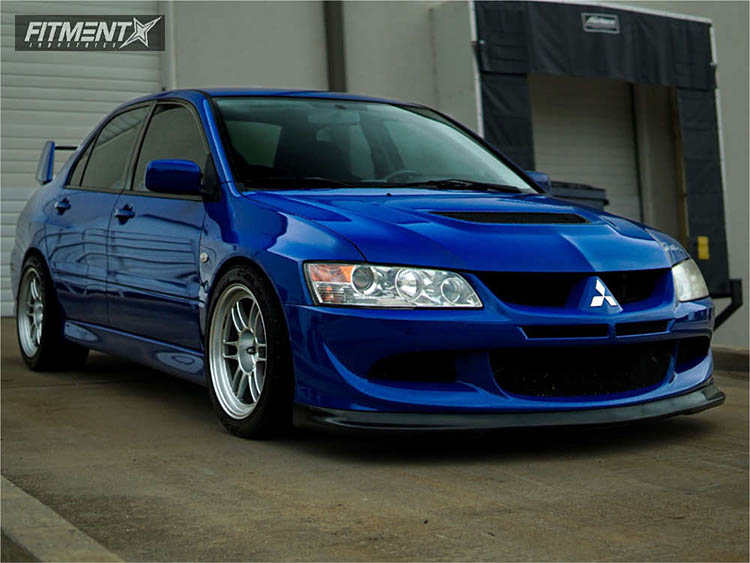
Mitusbishi’s fierce rival to the Subaru Impreza first launched in the 90s, providing mind-blowing AWD performance.
It may not make the best chassis for drifting, but it had no trouble holding its own in the World Rally Championship, with the likes of Tommi Mäkinen behind the wheel.
One of the most desirable Evo’s is the VIII MR FQ-400, which delivered a 0-60 mph time of 3.5 seconds before reaching the quarter-mile mark in 12 seconds.
Nissan 350Z/370Z
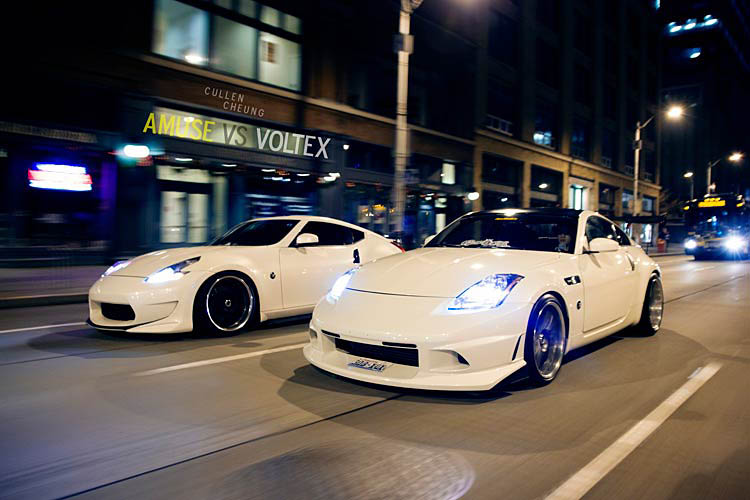
Although the modern-day Fairlady’s may have gained a few pounds over the years while providing nothing mind-blowing in the performance department, they’re not to be underestimated.
Sure, out of the box, they’re not the most exciting thing on the road, but the ever-tempting price tag, combined with tuning potential, is why the Z-car is proving to be an increasingly-popular modern-day drifter.
Available at a small fraction of the initial price tag, there’s a vast selection of tuning upgrades to consider, which will transform your 350Z or 370Z into a ridiculous tire slayer.
If you’re looking for the best that the Z-car range has to offer in stock form, the NISMO variant tops the list, with uprated suspension and up to 350 hp on tap.
As far as bang-for-your-buck goes, you’ll struggle to find something much better than a Z-car, especially if your intentions involve throwing it down sideways!
Nissan Silvia
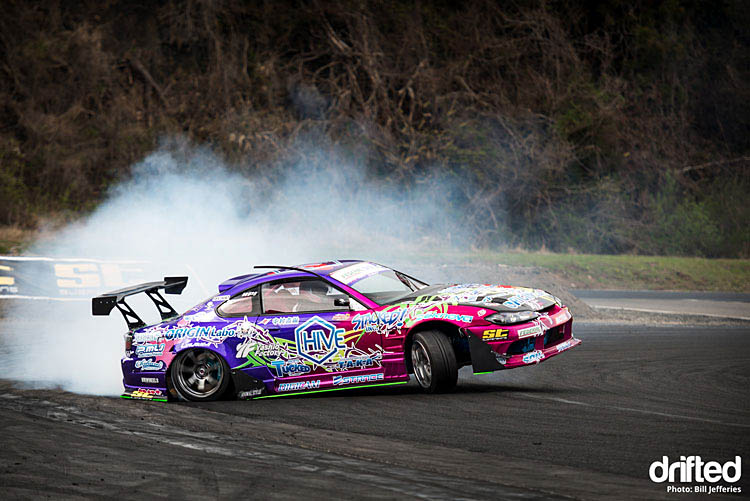
The Nissan Silvia family should need no introduction to any drifting fan!
However, we wouldn’t expect you to know that the first-ever Silvia was produced in 1965, with a whopping 96hp 1.6L engine.
Awkwardly, just 554 sold.
From there, Nissan launched the S10 in 1975, with a 1.8L inline-four with the rear-wheel-drive layout that it’s best known for.
After a stint in the WRC with the Silvia 240RS in 1983-85, the S12 was born, featuring the first-ever CA18 engines.
Following that, it would be the first Silvia to truly take the world by storm - the Nissan Silvia 180SX S13.
Also known as the 200SX in Europe and 240SX in the US, it immediately claimed the Japanese Car of the Year Award.
Next was the birth of the SR20DET in the S14 before the S15 arrived shortly after, boasting the most impressive power figures of them all.
Sadly, the Nissan Silvia S15 ceased production in 2002 and remains the final Silvia to the present day.
The Silvia family has arguably become the most popular and celebrated chassis in drifting, with the likes of Naoki Nakamura making it his weapon of choice.
While the S15 may be over twenty years old now, it’s still capturing podiums across the globe.
Nissan Skyline
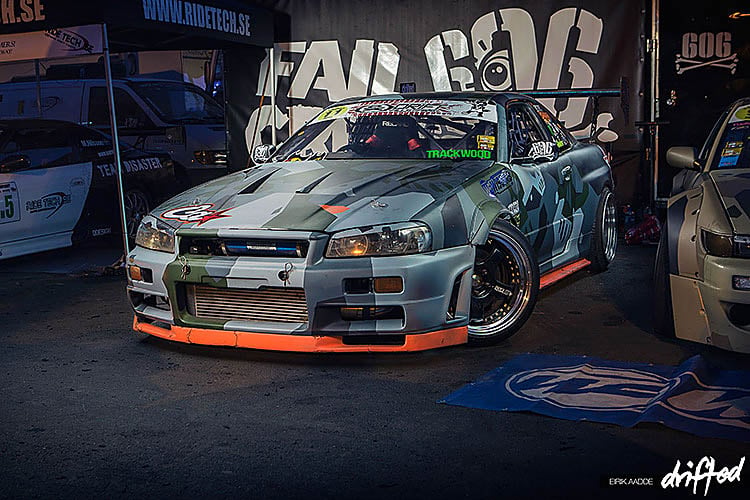
We’ll begin with the modern-day Skyline family. Y’know, The Fast and the Furious ones.
While the R31, which first launched in 1986, was a solid effort – the R32 GT-R set the standard for the rest of the Skyline family to follow.
Housing the legendary RB26DETT under the hood, along with the groundbreaking modern ATTESSA AWD technology, Godzilla began destroying the competition across the globe.
Although the R33 GT-R wasn’t as revolutionary or (arguably) visually enticing, it’s still a highly desirable alternative with an ever-growing price tag.
However, it’s Paul Walker’s favorite, the R34 GT-R, that remains the most sought-after, often fetching six-figure price tags in the present day.
Given that the RB26DETT produced 600 hp with ease, 1,000 hp is soon achievable if your pockets are deep enough, putting them up there with some of the most inspiring engines ever produced.
Nissan Skyline GT-R KPGC10
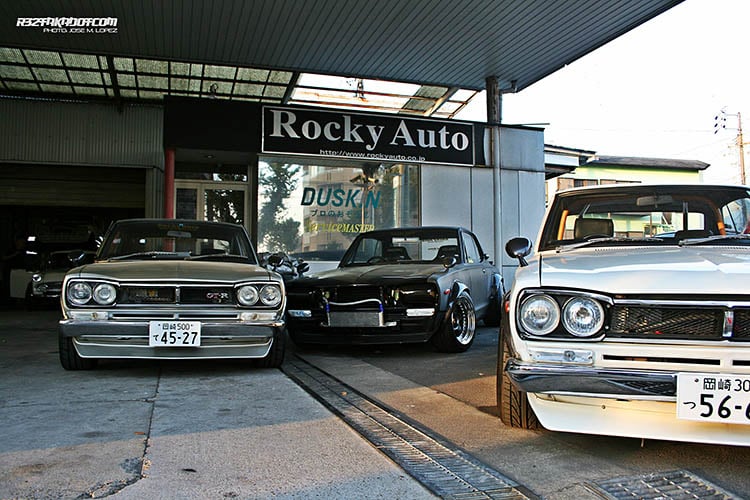
We’re aware we’ve just covered Skyline’s, but… HAKOSUKA!
In our eyes, the KPGC10 is the ultimate JDM legend - we could spend all day sitting here staring at it.
Now over fifty years old, the Hakosuka had just 158 hp and 131 lb/ft torque, which may sound disappointing by modern standards.
But, let’s face it, combining that with a 7,000 rpm redline in 1969 would leave most other cars in your dust.
For this reason, the Hakosuka went on to win 49 consecutive races in the Japanese Grand Prix.
Quite simply a thing of beauty, with game-changing performance (in its time) to match.
Subaru Impreza 22B
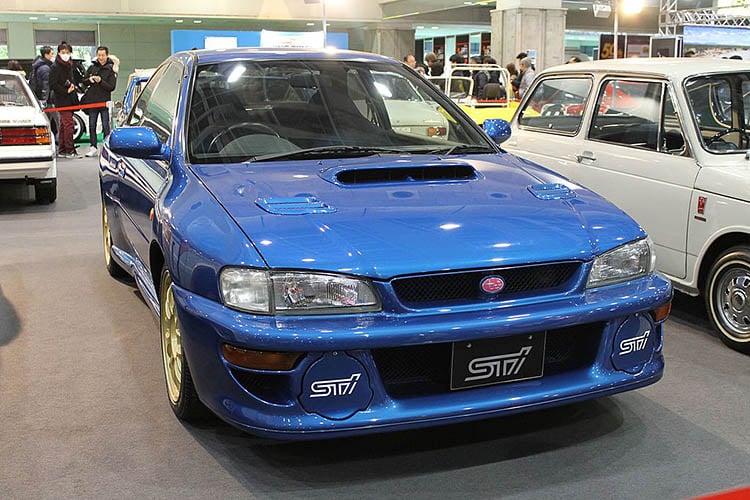
Only 400 “Holy Grail” JDM Subaru Impreza 22B STi’s were ever sold, with the internet rumor mill circulating that it took between thirty minutes and 48 hours before they sold out.
Alongside the 400 JDM models, an additional 24 left for export markets, with 16 headed to the UK, 5 for Australia, and three prototype models.
Featuring a factory widebody, Subaru produced the two-door coupe between March and August to celebrate their 40th anniversary, alongside their third consecutive manufacturer’s title in the WRC.
With its EJ22G engine, the 22B officially produced 276 hp, with the fender flared widebody adding 80mm to the width alongside many unique and highly desirable body panels alongside 17” wheels.
The 22B has continued to be the most desirable of all Impreza’s in the present day and also became Bunta Fujiwara’s touge choice in the hugely popular Initial D series.
Needless to say, if you look at 22B prices in the present day, they were a relatively decent investment!
Toyota 2000GT
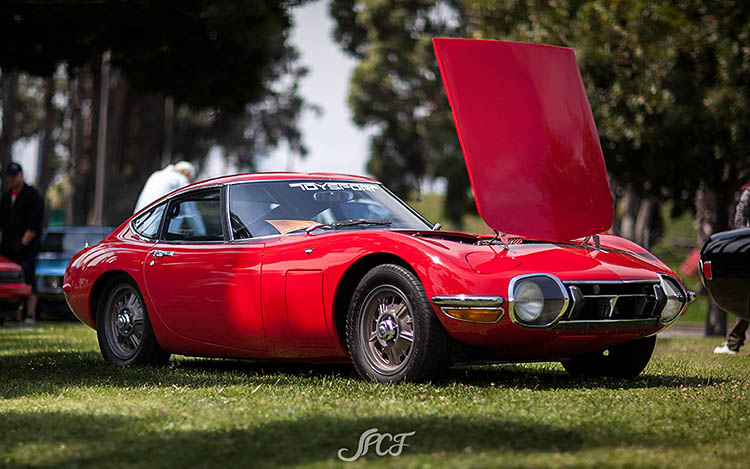
As Toyota and Yamaha joined forces, something special would be born - the Toyota 2000GT.
With a JDM touch on E-Type Jag styling, this gorgeous rear-wheel-drive coupe produced 148 hp from its 2-liter straight-six engine.
Just 351 units were produced during its three-year production span from 1967-1970, one of which became a “Bond” car. Move over, Aston Martin!
The 2000GT helped put Toyota on the global map, and with impressive performance for its time, it’s easy to see why it has a cult following.
With prices reaching beyond the million-dollar mark at auctions in recent years, you may want to get saving if you hope to stand a chance of getting your hands on one!
The 2000GT is yet another true legend in the Japanese sports car world.
Toyota Corolla AE86
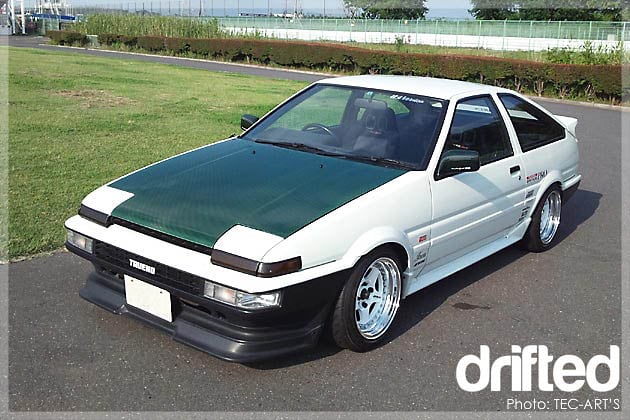
The godfather of drifting - we present the Hachi-roku Toyota Corolla AE86.
As the weapon of choice for both Keiichi Tsuchiya and Takumi Fujiwara, the eight-six reserves its place in the heart of any old-school drifting fan.
It may only have a 128-horsepower 1.6L engine under the hood in stock form, but it’s none other than the epic inline-four 4AGGE twin-cam 16v, which is the perfect match for this small, lightweight, and compact Japanese sports coupe.
With impeccable handling and responsive steering, don’t be fooled by underestimating the twin-cam, especially on the touge!
The 4AGE was a game-changer when it was released in 1983, and the screaming engine perfectly matches the car’s character.
If you’re keen to get behind the wheel of an AE86, make sure you check out the free and exclusive Touge Drift & Racing game in the Drifted Games arcade.
Toyota GT86/Subaru BRZ
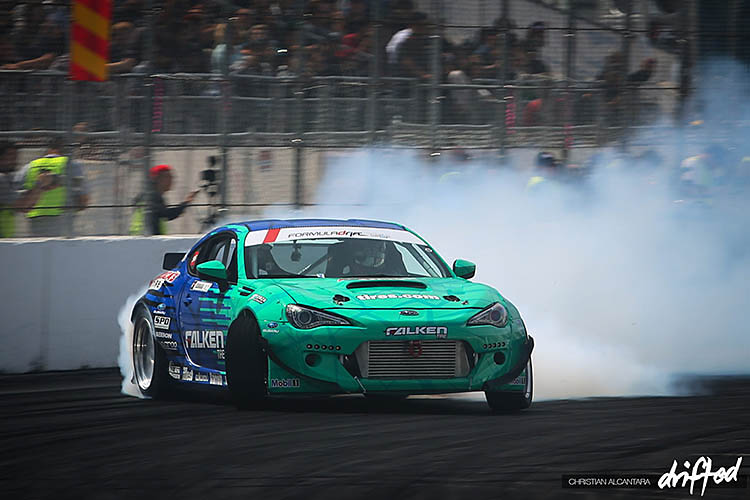
If you’re looking to purchase one of the finest Japanese sports cars in the present day, with a realistic budget, the Toyobaru GT86/BRZ has to be a contender.
As the successor of the AE86, it wasn’t designed with massive power in mind, often making it feel a little lacking in stock form.
However, with our wide selection of BRZ tuning guides, they’ll help you unleash the true potential, and we’re sure you won’t be disappointed!
An increasing number of professional drivers are leaning towards the 86 chassis, and it’s been proving itself on the big stage by capturing podiums across the globe in recent years.
Along with its stunning modern design, there’s no doubt that it’s gifted with excellent weight distribution and handling.
Once you extract the power lying in wait, it’ll be sure to provide the ultimate Japanese sports car experience.
Toyota Supra
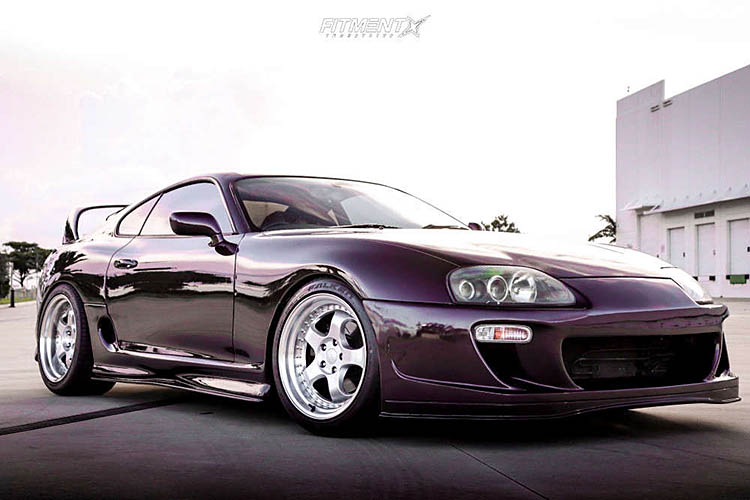
Finally! Last but not least, we reach the awesome Toyota Supra, with its legendary BMW engi…
Just kidding – 2JZ BABY!
Toyota’s 2JZ-GTE is the holy grail of Japanese sports car engines, which left the showroom in just two cars - the VIP-style Toyota Aristo, and more commonly, the MKIV Toyota Supra.
Despite the maximum power output in its stock form being a tame, yet respectable 326 hp, the tuning potential of the 2JZ-GTE allows it to reach four figures with ease.
Even with the stock output, the twin-turbocharged setup reaches 0-60 mph in just 5.1 seconds before reaching 156 mph.
Toyota made the Supra as light as possible, going as far as using hollow carpet fibers and a magnesium-alloy steering wheel.
The Supra has become one of the most iconic Japanese sports cars, with Hollywood movies such as The Fast and the Furious franchise further boosting its popularity on the mainstream platform.
For tuners, the 2JZ-GTE will undoubtedly be the most tempting part of the Supra, which has sent prices soaring.
Despite the price falling out of range for most drifters, there’s thankfully a reasonably priced alternative - an NA-T turbo upgrade on the 2JZ-GE.
2JZ-GE’s are far more common and a fraction of the price, thankfully sharing many of the 2JZ-GTE’s benefits, such as identical rods and crankshaft.
For now, the Supra will remain a dream for many, and we do not doubt that prices will, unfortunately, continue to soar.
So, there we have it! We hope that we’ve covered everything you could want to know about Japanese sports cars in this guide.
Thank you for reading our Japanese Sports Cars guide.
If you enjoyed this article, please share it with the buttons at the bottom of your screen. If you’ve found this information useful, then please take a moment to share it with other JDM enthusiasts. We appreciate your support.
Photography credits
We thank the following entities for the use of their photography in this article:

















